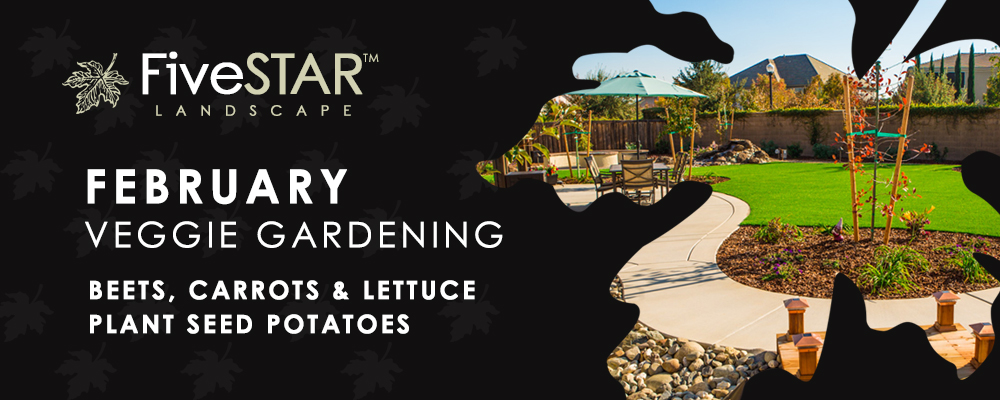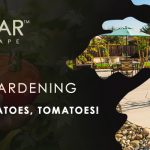February Veggie Gardening Tips Sacramento
February Veggie Gardening Tips Sacramento

(Zone 9b Sacramento, CA – Sow seeds of cool-season crops; Beets, carrots, lettuce. Plant seed potatoes.)
February might feel like the middle of winter, but it is actually time to get your garden started. This is the time of year when you start sowing your cool weather crops, trimming your overgrown trees and shrubs, and getting your garden ready for the warmer months to come. This is a perfect time to start getting your Sacramento Landscape Design plans ready, whether it is a landscape renovation or a new install.
Sow cool season crop seeds
If you were in a cooler zone, you would be sowing these seeds indoors in planting flats and preparing to transplant them to the garden in April and May. Lucky you, though, you are in Sacramento, which is in Zone 9b. It is probably not going to freeze again this year, and if it does it will be a light freeze. Throw a plastic sheet over your plants and they will be fine.
Peas
One of the crops to plant right now is peas. You can choose varieties that have edible pods, such as sugar snap peas and snow peas. Or you can choose varieties that have tough pods which require shelling.
You also get to choose bush beans or pole beans. Bush beans, as the name suggests, grow on a bush. Pros: you don’t have to use supports. Cons: the growing season is shorter and ends early. Pole beans, again as the name suggests, require a pole or trellis to support the vines. Pros: the growing season is longer. Cons: you have to set up a trellis.
To irrigate peas, use a soaker hose or some other ground level method of irrigation. If the leaves get too wet, the plant can succumb to powdery mildew.
Beets and carrots
Beets and carrots are both root vegetables. Plant them in a raised bed, or in deep garden soil that is free from rocks.
Starting your Lettuce
Lettuce is one of the easiest plants you can grow, and one of the biggest rewards of a winter garden. You can harvest the shoots as they grow – you do not need to wait for it to form a lettuce head. Just trim off the biggest leaves every day before dinner, and you will have fresh salads all the way until the oppressive heat of summer starts. Once your lettuce sends up a tall flower stalk, it is done. The leaves will be bitter after it has “bolted” like this. However, you can wait for the flowers to open and the seeds to mature, and then hang it upside down with a paper bag over it to catch the seeds.
Seed potatoes
Potatoes propagate through the “eyes” of the root. If you have ever had a bag of potatoes sit in a cabinet for too long, you have probably seen these eyes start to sprout. Many people cut up their potatoes from last year, or even cut up grocery store potatoes, making sure to get an eye in each chunk. If you plant these, they will grow into new potato plants.
However, exercise caution. Potatoes can carry soil-borne diseases. If you are getting your potatoes in the store, you have no idea what diseases may be on them, or how many chemicals the farmers who grew them had to use to combat those diseases. Always get your seed potatoes from a nursery or from a reputable company, and look for a Certified Seed Potato tag. This guarantees that the potatoes are free from diseases and will not contaminate your garden soil.
When you go to plant your seed potatoes, cut up any that are larger than an egg. Each piece needs to have an eye. (If you aren’t sure what a potato eye looks like, it looks like a dimple.) After cutting, store your potato chunks at room temperature with plenty of ventilation for up to 3 days before planting them. This helps to keep them from rotting underground.
Your potatoes need to be planted when the soil is 55 degrees or warmer. At this point, a frost might delay your plants’ growing, but it will probably not kill them. There are many different ways to grow potatoes, including in barrels, in stacks of old tires, or in a shallow bed with a thick layer of straw for mulch.





